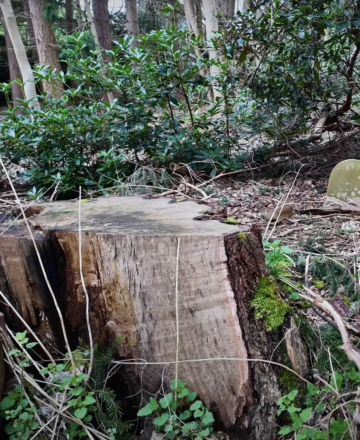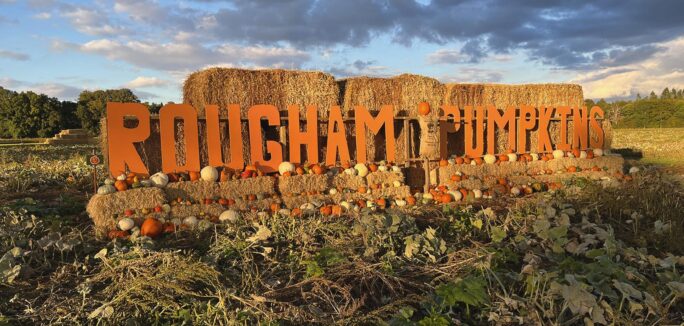About
This walk goes through Downs Wood and crosses the A14 to explore Rougham Park and visits Tummel’s grave. Tummel was the favourite dog of Sir George Agnew who lived at Rougham Hall, and he was buried under an oak tree in the park in 1936.
Please keep to the paths as described here and respect the private land and the nature they pass through, including a residential area.
Please note that this walk is partly on paved roads but also goes through woodlands which can be muddy, depending on the weather, and could have branches or other woodland debris across them. There are two cattle grids, both with pedestrian gates to the side.
The walk starts at Blackthorpe Barn where you can find plenty of free parking as well as Roots Café and the Garden Room shop (or the Christmas Shop from mid-October to the end of December). Please remember that the gates to the avenue entrance are locked after the Cafe and Shop close. More details here.
For more general information about this and other walks, see Walks around Rougham Estate. We hope you have a lovely walk.
Directions
To go on this walk:
- use the waypoints on this page
- use the Google Map below on your phone to follow the path shown
- download or print the route, including waypoints and pictures, using the Download PDF button near the top of this page
- download the GPX file from the button near the top of the page and use your gps device
If you can’t access the map through the image above, use this google map link.
You can zoom in and out of the Google map, see your own location on the map and view the waypoint descriptions and photos as you go along.
You can also go on the Tummel’s Grave and Rougham Park Walk with George Agnew, and Bolly the dog, by watching this video, where George talks about his great grandfather who bought the Rougham Estate in 1904 and about Rougham Park’s history while walking along the path:
Weather
Waypoints
01
Step 1
From Blackthorpe Barn turn right and pass through the car parks along the concrete road until you reach the Downs Wood on your right.
02
Step 2
A path leads into the wood shortly after you reach its boundary. Follow this path bearing left at a fork and then turning left after 50 metres. Follow through the wood to the far end.
03
Step 3
At this point turn left at a T junction. This path leads you out of the wood.
04
Step 4
As you emerge you find yourself on a concrete road. Take care as vehicles come down from the bridge on your right as some speed.
05
Step 5
Turn right onto this road and cross over the A14 on the bridge. Again watch out for vehicles which share the bridge with walkers and cyclists.
06
Step 6
On the far side, follow the concrete road as it runs parallel with the A14 for 200 metres.
07
Step 7
You pass a row of four red brick Edwardian Cottages called Home Farm Cottages. On either side of these are the largest and some of the oldest oaks on the Rougham Estate. They have huge girths (the distance round the tree trunk at shoulder height). The one on the right is over 9 metres which makes it one of the most important oaks on the Rougham Estate.
08
Step 8
As you reach a sign for the Rougham Estate Office turn left. As you approach a gate in front of you, look to the right-hand side where there is a gate for walkers and those on horseback. Use this to avoid forcing the electrically operated main gate and also to avoid twisting your ankle on the cattle grid. Close the gate behind you and continue down the driveway.
09
Step 9
The sound of the A14 will gradually diminish as you adjust to the new parkland landscape with huge oak trees, meadows which you see but do not enter and ahead of you the park of Rougham Hall. You pass another cattle grid with a side gate which you should close behind you.
10
Step 10
Ignore a turning to the right, after which a roadway goes off to the left. Ignore this and continue straight on. Then take the right-hand road as it swings round the corner and continue for 150 metres approximately.
11
Step 11
You pass the start of an avenue of conifers. The older trees were planted by Sir George Agnew in around 1910. They are Douglas Fir and are reaching the end of their lives. Interplanted between them are Wellingtonias or Giant Redwoods, which were planted 20 years ago to replace them.
12
Step 12
After some 150 metres you will see a track coming in from the right which forks as it reaches the driveway you are walking on. Turn left as you pass the further branch of the fork, taking you off the driveway, between the avenue of trees. As the path drops down you will see that you are about to pass the start of a Christmas tree plantation.
13
Step 13
Follow this path with the Christmas tree fence on your right. There is a strip of shorter-cut grass guiding your route. As you move beyond the plantation, the land opens up but keep on the cut grass strip. This will bring you to a wooded area with the path leading through it. Follow this path and continue for another 200 metres.
14
Step 14
At this point you will see an earth bank on your right and a path leading away to the left up the slope. Follow this path until it joins a driveway crossing you at right angles.
15
Step 15
This driveway is now hardly used and is thickly covered with leaves so look carefully. When you reach it, turn left and follow it as it winds its way along, eventually reaching some buildings on the right-hand side.
16
Step 16
The first of these buildings is the old Coach House for Rougham Hall. It has now been converted into a house which is lived in, so please respect the residents’ privacy and walk quietly by. Next on the right is a bungalow which was built for Sir George’s chauffeur. This is also lived in. In the distance you will see the clocktower of the old stable block. Do not walk further up this way as it is all a residential area. Instead follow the driveway round to the left.
17
Step 17
This road now gradually makes its way downhill. In the distance you can see the avenue that you walked along earlier, planted with Douglas Fir and Wellingtonia trees.
18
Step 18
Just over halfway down the slope look to your right. You will see the stump of an Oak tree which had to be cut down for safety reasons. This is the very tree under which Sir George’s dog Tummel is buried. His grave is marked by a small gravestone with the name Tummel and the date 1936. Tummel was named after Loch Tummel in Scotland, which was Sir George’s favourite place to visit on holiday. Tummel was appropriately a little Scottie dog.
The vast trunk of this tree has been used to create a very special sculpture which is on display in the meadow near Blackthorpe Barn (see waypoint 25).
19
Step 19
Continue down the drive until you meet the avenue drive coming in from the left that you walked up earlier. Keep right.
20
Step 20
Continue down the drive, with forks joining from the right and left as you approach the cattle grid that you passed on the way out earlier. Use the side gate now on your left front.
21
Step 21
Continue retracing your steps to the other cattle grid and the Estate Office. Here turn right and follow the concrete road beside the A14 to the bridge which again takes you over the very busy road.
22
Step 22
On the far side follow the roadway to the right which will bring you back to the Downs Wood, now on your left front.
23
Step 23
This time just stay on the concrete road as you pass the wood on your left and some Christmas tree plantations on your right. This will lead you back to the Blackthorpe Barn carparks.
24
Step 24
Don't forget to visit the vast trunk of the oak tree that was growing at Tummel's grave, which has been used to create this very special sculpture, here in the meadow near Blackthorpe Barn.
The sculpture is called Forest Floor and is inspired by the extraordinary discoveries recently made about the interconnectedness of life forms in areas of ancient forest where they remain undisturbed for hundreds if not thousands of years. Take some time to enjoy looking at this wonderful tree, and then enjoy the welcome you and your dog will receive at Roots Café.
Important information
We have endeavoured to provide a real variety of walks based on land within the Rougham Estate, however some destinations are a little remote and to achieve circular walks rather than walks which just retrace their steps, where necessary, use has been made of the extensive footpath network and chosen public footpaths on our neighbours’ land, to complete the journeys in more interesting ways.
The Rougham Estate walks, starting from Blackthorpe Barn, are largely based on existing Estate paths and public rights of way. They mostly pass through woodland and along field-side paths.
Each walk is given a difficulty rating ranging from “easy”, which are the most accessible, to “hard”, which are the most challenging and may include stiles, kissing gates, steps, steep slopes and meadows with cattle.
All these walks follow existing paths and are subject to mud and puddles in wet weather, fallen branches and trees during and after storms, ice and snow during frozen weather. Brambles and nettles are common anywhere and will overhang the paths during the summer. Stinging insects including wasps, bees and hornets may be encountered and midges and mosquitos are common on summer evenings. Adders are rare but do exist and should not be approached.
The Blackthorpe Barn has a defibrillator available for emergency use.
Rougham is located in a very flat part of Suffolk and as such is more accessible than most other parts of the country, but concepts of accessibility are all relative and the final judgement must be the responsibility the visitor themselves.
The Rougham Estate does its best to make public areas as available as possible.
The Estate cannot accept responsibility for accidents or injuries incurred during visits or walks on the Estate, though every effort is made to make them as usable as possible.
Here at Rougham we love dogs and really appreciate the importance that they hold for people in their lives and on their walks and outdoor adventures together.
We ask that you keep your canine friends on a lead when you are walking in Rougham. It is safer for the dog and much safer for wildlife.
Ground nesting birds and other wildlife are seriously threatened by dogs running loose. They can also frighten other people who are less comfortable with dogs, but who would also like to walk.
Finally, you will not be able to see where they poop and so will not be able to clear it up and leave a hazard for future walkers.
Some of the walks shown here include sections on public rights of way over land owned by other people. As a courtesy to them too, please always keep your dogs on the lead.
Thank you!
Please ensure that you carry poop bags with you on your doggy walks. If you don’t have any with you, you can buy some in the Garden Room shop. It is so important that you clear up after your dog and then take the bag away with you.
You will find poop bins located near Blackthorpe Barn and Roots Café. Finding abandoned poop bags hanging in the branches of trees or just left on the ground is very unattractive for future walkers on the route so please do take them with you.
Thank you so much.
We have given each walk a difficulty level, as a guide to the potential walker as to what to expect, from “easy” to “hard”.
The Rougham Estate walks are largely based on existing Estate paths and public rights of way, at times passing through woodland and along field-side paths.
A difficulty rating of “easy” means the path is most accessible.
A difficulty rating of “hard” means the path is one of the most challenging possibly including stiles, kissing gates, steps, steep slopes and meadows with cattle.
A difficulty rating of “medium” is between the two.
None of the walks are very hard as we live in Suffolk, not the Lake District, however some people are looking for something very gentle and others, something a bit more challenging.
These walks lead through the Suffolk countryside and so expect to find muddy patches, nettles and thistles. It is important to remember that the weather may change during your walk too, especially if the walk is a long one.
Remember to wear sensible boots and take something waterproof along as well.
A sun hat for warmer weather is important too.
Our ancient meadows are a wonderful sight and well worth a visit on one of our walks. The reason they remain like this is that they provide grazing for cattle as they have done for many hundreds of years. You must assume that there may be cattle in any meadow that you visit.
Leave all gates how you find them and ensure that any dog you have is on a short lead and kept close to you. Cattle are curious creatures and may well approach you to see who you are. They are also herd animals, so they tend to move together with one taking the lead. They are also frightened of dogs. This is an inherited memory linking back to the times of wolves. Just walk steadily through the meadow. Don’t let anyone chase the cattle or make loud noises.
If you or anyone in your party is uncomfortable about cattle it may be best to choose another walk.
Waypoint Pictures


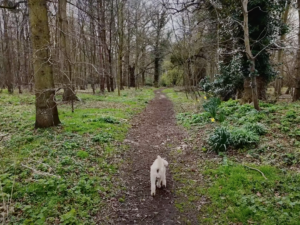







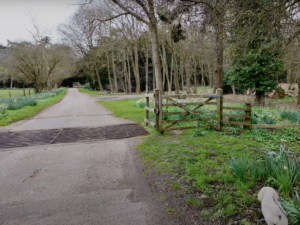







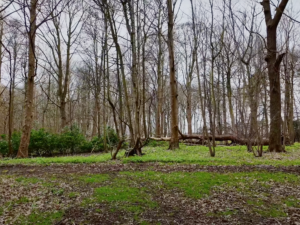








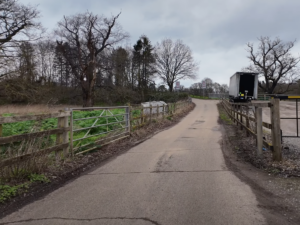




Start your walk with a coffee, end with a cake.
Experience a charming and cosy spot located in the heart of the beautiful countryside. The café boasts a tranquil and serene atmosphere, making it the perfect place to unwind and escape the hustle and bustle of daily life.
NEVER MISS A THING
Follow us on social
A zesty twist on a classic favourite – our Limoncello Waffle is pure sunshine on a plate.
Topped with silky Limoncello curd, Italian meringue, a splash of raspberry coulis and a touch of lime to keep things fresh.
Sweet, sharp and impossible to resist. Why not treat yourself?
#LimoncelloWaffle #WeekendBrunch #DessertLovers #WaffleTime #CitrusTwist #FoodieFavourites #SweetTooth #BrunchGoals #ItalianFlavours #EatTheRainbow #RoughamEstate

A zesty twist on a classic favourite – our Limoncello Waffle is pure sunshine on a plate.
Topped with silky Limoncello curd, Italian meringue, a splash of raspberry coulis and a touch of lime to keep things fresh.
Sweet, sharp and impossible to resist. Why not treat yourself?
#LimoncelloWaffle #WeekendBrunch #DessertLovers #WaffleTime #CitrusTwist #FoodieFavourites #SweetTooth #BrunchGoals #ItalianFlavours #EatTheRainbow #RoughamEstate
If you’ve been to the Estate you will know we have lots of woodland with a remarkable collection of ancient and veteran oak and lime trees.
Many of these trees are hollow, with branches reaching down to the ground, showcasing their impressive age. They play a crucial role as habitats for thousands of species.
Currently, we’re conducting a survey to explore the diverse wildlife that inhabits these trees, including those near Blackthorpe Barn. We look forward to sharing the results with you this autumn! So watch this space!
#RoughamEstate #AncientTrees #WildlifeSurvey #NatureConservation #Ecology #Biodiversity #Oaks #LimeTrees #ExploreNature #AutumnDiscoveries #ProtectOurPlanet

If you’ve been to the Estate you will know we have lots of woodland with a remarkable collection of ancient and veteran oak and lime trees.
Many of these trees are hollow, with branches reaching down to the ground, showcasing their impressive age. They play a crucial role as habitats for thousands of species.
Currently, we’re conducting a survey to explore the diverse wildlife that inhabits these trees, including those near Blackthorpe Barn. We look forward to sharing the results with you this autumn! So watch this space!
#RoughamEstate #AncientTrees #WildlifeSurvey #NatureConservation #Ecology #Biodiversity #Oaks #LimeTrees #ExploreNature #AutumnDiscoveries #ProtectOurPlanet
Our brunch special for this week is…
Salted caramel apple churros, with almond crumble.
We anticipate this to be a sweet success! So why not treat yourself this bank holiday Monday??
#BrunchSpecial #SaltedCaramel #AppleChurros #AlmondCrumble #SweetSuccess #Foodie #BrunchLovers #GourmetTreat #Yummy #Foodstagram #RootsCafe #RoughamEstate

Our brunch special for this week is…
Salted caramel apple churros, with almond crumble.
We anticipate this to be a sweet success! So why not treat yourself this bank holiday Monday??
#BrunchSpecial #SaltedCaramel #AppleChurros #AlmondCrumble #SweetSuccess #Foodie #BrunchLovers #GourmetTreat #Yummy #Foodstagram #RootsCafe #RoughamEstate
Looking for something to do this half term?
Rougham Estate is the perfect spot whether you’re here for a gentle wander or to spend time with the family.
Roots Café has a great kids` menu, with a tempting range of ice creams from saffronicecreamco, and a sandpit to keep them entertained.
There’s plenty of space to enjoy the Suffolk countryside with our walks which are ideal for all ages and abilities – whether it’s a short distance or something more challenging.
Dogs are more than welcome too but we ask that they are on a lead, with paws on the floor – in both the café and on the trails.
Come for a catch-up, a coffee, a stroll or just a bit of breathing space. Everyone is welcome.
#RoughamEstate #HalfTermFun #FamilyDaysOut #SuffolkDaysOut #RootsCafe #KidsActivities #DogFriendly #WalksForAll #SandpitFun #IceCreamLover #CountrysideEscape #FreshAirAndFun

Looking for something to do this half term?
Rougham Estate is the perfect spot whether you’re here for a gentle wander or to spend time with the family.
Roots Café has a great kids` menu, with a tempting range of ice creams from saffronicecreamco, and a sandpit to keep them entertained.
There’s plenty of space to enjoy the Suffolk countryside with our walks which are ideal for all ages and abilities – whether it’s a short distance or something more challenging.
Dogs are more than welcome too but we ask that they are on a lead, with paws on the floor – in both the café and on the trails.
Come for a catch-up, a coffee, a stroll or just a bit of breathing space. Everyone is welcome.
#RoughamEstate #HalfTermFun #FamilyDaysOut #SuffolkDaysOut #RootsCafe #KidsActivities #DogFriendly #WalksForAll #SandpitFun #IceCreamLover #CountrysideEscape #FreshAirAndFun
Well, that didn’t take too long… we said the pumpkins could do with a drink, and overnight we had 5mm of rain! Not quite a soaking, but after such a dry stretch, we’ll take what we can get.
It’s come at just the right time to help the freshly planted pumpkins settle in. A bit more over the next week or so wouldn’t go amiss – fingers crossed the raindance keeps working (and only at night 😊).
Meanwhile, the rest of the crops on the estate will be soaking up the rain and moving along nicely now, including the Sunken Garden.
Let’s keep doing the raindance for a little bit longer!
#RoughamEstate #FarmingLife #Pumpkins2025 #RaindanceSuccess #GratefulForRain #UKFarming #SunkenGarden #SpringAtRougham #FromFieldToGarden

Well, that didn’t take too long… we said the pumpkins could do with a drink, and overnight we had 5mm of rain! Not quite a soaking, but after such a dry stretch, we’ll take what we can get.
It’s come at just the right time to help the freshly planted pumpkins settle in. A bit more over the next week or so wouldn’t go amiss – fingers crossed the raindance keeps working (and only at night 😊).
Meanwhile, the rest of the crops on the estate will be soaking up the rain and moving along nicely now, including the Sunken Garden.
Let’s keep doing the raindance for a little bit longer!
#RoughamEstate #FarmingLife #Pumpkins2025 #RaindanceSuccess #GratefulForRain #UKFarming #SunkenGarden #SpringAtRougham #FromFieldToGarden
Just a little reminder that our Pop-Up Plant Stall with Watsons Plants kicks off tomorrow for the Bank Holiday weekend!
If you’re into gardening or just fancy adding a bit of green to your space, come along to the courtyard from 10am-2pm on Saturday, Sunday and Monday.
Chris Watson will be there with a great mix of plants and plenty of advice to help you get your garden looking its best this summer.
See you there!
#BankHoliday #Gardening #PopUpPlantStall #WatsonsPlants #rootsandherbs

Just a little reminder that our Pop-Up Plant Stall with Watsons Plants kicks off tomorrow for the Bank Holiday weekend!
If you’re into gardening or just fancy adding a bit of green to your space, come along to the courtyard from 10am-2pm on Saturday, Sunday and Monday.
Chris Watson will be there with a great mix of plants and plenty of advice to help you get your garden looking its best this summer.
See you there!
#BankHoliday #Gardening #PopUpPlantStall #WatsonsPlants #rootsandherbs
Pumpkin season prep has officially begun!
We’ve just started planting the pumpkin seeds for our ever-popular October patch, and we’re already looking forward to seeing the field full of colour later this year to welcome families for a pumpkin extravaganza!
As much as we hate to say it, but fingers crossed for a bit of rain to help them establish.
We’ll keep you posted on their progress, but for now it’s all about patience, sunshine… and a few well-timed showers.
Roll on autumn!
#RoughamEstate #PumpkinPatch #PumpkinSeason #SuffolkDaysOut #OctoberFun

Pumpkin season prep has officially begun!
We’ve just started planting the pumpkin seeds for our ever-popular October patch, and we’re already looking forward to seeing the field full of colour later this year to welcome families for a pumpkin extravaganza!
As much as we hate to say it, but fingers crossed for a bit of rain to help them establish.
We’ll keep you posted on their progress, but for now it’s all about patience, sunshine… and a few well-timed showers.
Roll on autumn!
#RoughamEstate #PumpkinPatch #PumpkinSeason #SuffolkDaysOut #OctoberFun
It`s definitely time for a brew!
Sometimes, a cup of tea is exactly what you need. Whether you`re taking a breather, catching up with a friend, or just enjoying a moment to yourself – it has that magic way of making things feel a bit better. That`s why it`s important to celebrate it!
To celebrate International Tea Day, we’ve got a whole line-up of feel-good favourites, from bold Black Teas to calming Herbal blends and creamy Matcha Lattes.
And there’s something special for today… Our new Assistant Manager at Roots Cafe has been getting creative and come up with a Strawberry Iced Tea special. It’s made with fresh homemade strawberrry syrup and is light and fruity for a warm day.
If you fancy upgrading your tea break, pop into the Garden Room Shop – we’ve got a lovely range of mugs and cups, whether you’re into minimal style or fun prints.
#internationalteaday #timeforatea #strawberryicedtea #matchalove #herbalmoments #teabreaksorted #creativityinacup #roughamestate #roughamestateshop #gardenroomshop #rootscafe

It`s definitely time for a brew!
Sometimes, a cup of tea is exactly what you need. Whether you`re taking a breather, catching up with a friend, or just enjoying a moment to yourself – it has that magic way of making things feel a bit better. That`s why it`s important to celebrate it!
To celebrate International Tea Day, we’ve got a whole line-up of feel-good favourites, from bold Black Teas to calming Herbal blends and creamy Matcha Lattes.
And there’s something special for today… Our new Assistant Manager at Roots Cafe has been getting creative and come up with a Strawberry Iced Tea special. It’s made with fresh homemade strawberrry syrup and is light and fruity for a warm day.
If you fancy upgrading your tea break, pop into the Garden Room Shop – we’ve got a lovely range of mugs and cups, whether you’re into minimal style or fun prints.
#internationalteaday #timeforatea #strawberryicedtea #matchalove #herbalmoments #teabreaksorted #creativityinacup #roughamestate #roughamestateshop #gardenroomshop #rootscafe
Tag us @RoughamEstate






